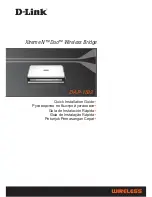
2-2
Table 2-1 is only for reference. If you install the AP on a desk, none of the above tools is required; if you
install the AP on top of or under eave of a building, no digging tool is required.
Examining the Installation Site
Before installation, you should examine the installation site to keep the AP under a good operational
environment. You can examine the installation site from the following two aspects:
Installation Site Selection
Keep the AP away from places that are susceptible to high temperature, dust, inflammable, explosive,
electromagnetic interference (high power radar, radio station, and transformer), unstable voltage, heavy
vibration, or loud noise. The installation site should be dry, without any leakage, dripping, or dew .The
AP should be at least 500 m (0.31 mi) away from the seaside and should not face the direction of sea
wind.
In engineering design, the site should be selected according to the network planning and technical
requirements of communications equipment, as well as the considerations such as climate, hydrology,
geology, earthquake, electric power, and transportation.
Temperature and Humidity Requirements
Table 2-2 lists the operating temperature and humidity requirements.
Table 2-2
Environment specifications
Specification
Range
Operating temperature (indoor)
-10°C to 55°C (14°F to 131°F)
Operating temperature (outdoor)
–40°C to +65°C (–40°F to +149°F)
Storage temperature (indoor)
–40°C to +70°C (–40°F to +158°F)
Storage temperature (outdoor)
–40°C to +85°C (–40°F to +185°F)
Operating humidity (noncondensing)
5% to 95%
Power Supply
The WA2200 series can be powered through 802.3af-compliant power over Ethernet (PoE) (except
WA2220X-AG) or an external power adaptor. For details see the Table 2-3.
Outside China it is recommended that this unit be PoE powered. Please see the H3C/3Com product
catalogues for a range of 802.3af compatible power sources.
















































